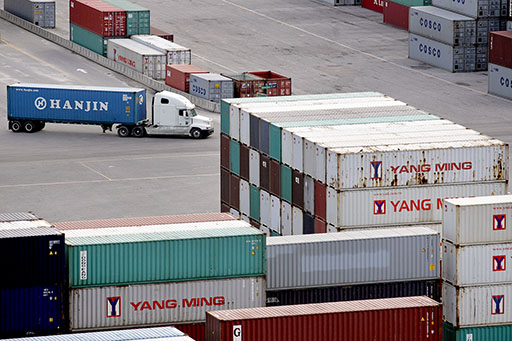5 Contemporary issues: economic relations

As you saw in Sections 1–3, much of the debate around China–United States relations concentrates on the remarkable economic growth China has experienced. This section explores some of the issues of conflict and cooperation at stake.
China’s rapid growth prompts an almost incessant level of commentary but some moments stand out. Consider the economic ‘headlines’ below.
- In 2011, China overtook Japan to become the second largest economy in the world (BBC, 2011).
- In 2011, China also became the largest foreign holder of US government debt, growing to over US$1 trillion dollars by 2013 (US Department of Treasury, 2013).
- The Telegraph reported that in 2012, China had become the world’s largest trading nation. US exports and imports amounted to US$3.82 trillion whereas China’s was US$3.87 trillion (White, 2013).
- In 2012 the United States trade deficit with China (the difference between how much the US exports to China and how much it imports from China) was US$315 billion (US Department of Commerce, 2013).
Activity 9
Do these economic ‘headlines’ about China’s development suggest that Chinese gains are necessarily a problem or threat to the United States? Is this an example of a zero-sum competition with the United States? Make some notes in the box below.
Discussion
It is undoubtedly the case that China’s rise, and the potential for it to eventually ‘catch’ the United States in terms of overall economic size, is a major change in the global economic landscape. And if the United States evaluates its position solely in terms of its relative advantage over China, then China’s catch-up is a zero-sum issue.
While it is easy to see China’s growing economy as a direct threat to US dominance, other things might also be borne in mind. Firstly, as the World Bank noted in 2013, in per capita GDP terms (GDP divided by population) China was still a developing country, ranked 114th in the world, and with over 170 million people existing on less than $1.25 a day (World Bank, 2013).
Secondly, even large levels of US indebtedness to China may not be a problem – in many ways it is of substantial benefit to the United States. The notion that China’s holding of debt is necessarily a problem, even a national security issue for the United States, has been touted by commentators in China and the United States. But in 2012 a US Government Defence Department report noted: ‘Attempting to use U.S. Treasury securities as a coercive tool would have limited effect and likely would do more harm to China than to the United States’ (US Department of Defense, 2012).
